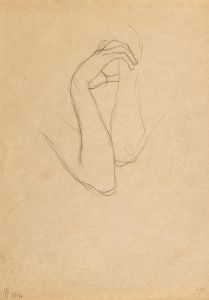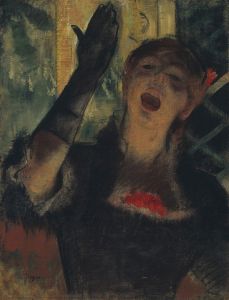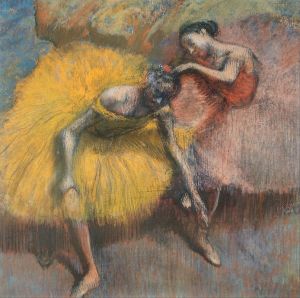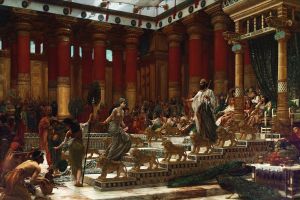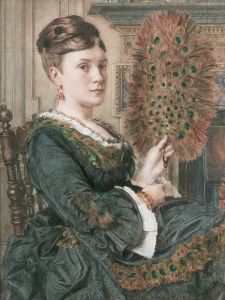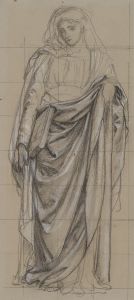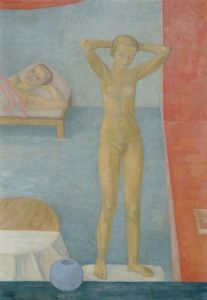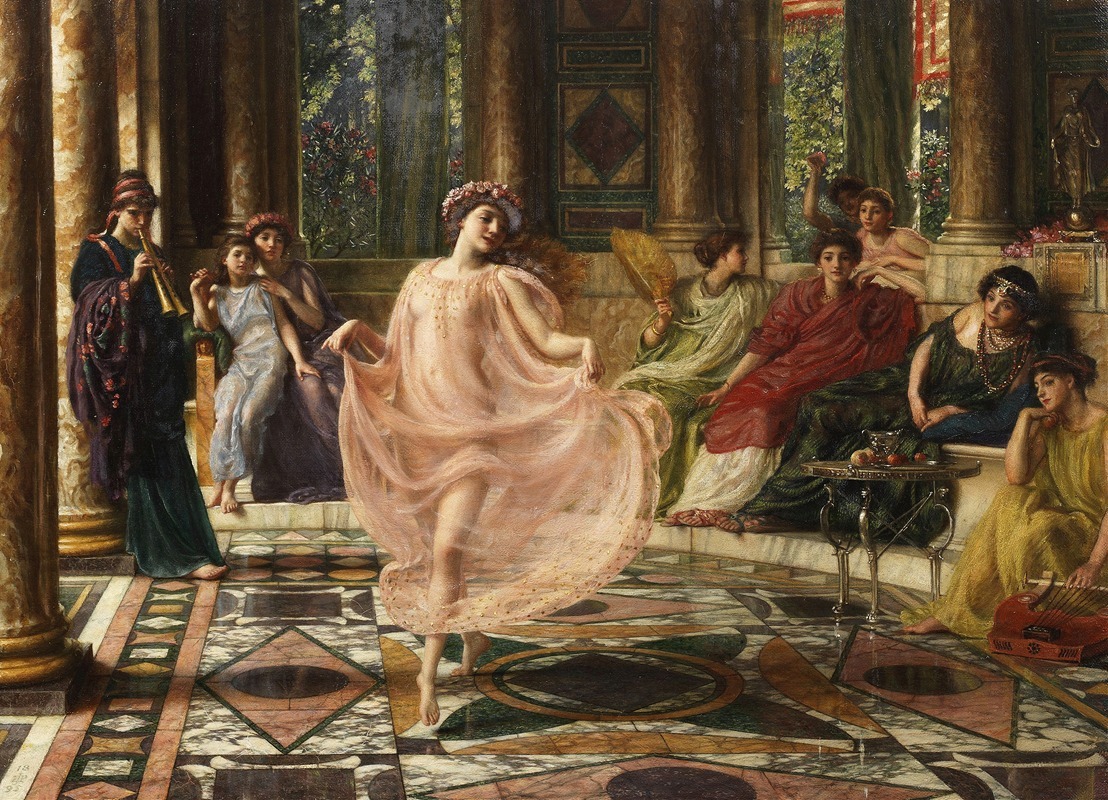
The Ionian Dance
A hand-painted replica of Edward John Poynter’s masterpiece The Ionian Dance, meticulously crafted by professional artists to capture the true essence of the original. Each piece is created with museum-quality canvas and rare mineral pigments, carefully painted by experienced artists with delicate brushstrokes and rich, layered colors to perfectly recreate the texture of the original artwork. Unlike machine-printed reproductions, this hand-painted version brings the painting to life, infused with the artist’s emotions and skill in every stroke. Whether for personal collection or home decoration, it instantly elevates the artistic atmosphere of any space.
Edward John Poynter's The Ionian Dance is a painting created by the British artist Edward John Poynter, a prominent figure in the Victorian art scene. Poynter, who lived from 1836 to 1919, was known for his academic style and meticulous attention to detail, often drawing inspiration from classical antiquity and historical themes. The Ionian Dance exemplifies his fascination with ancient cultures, particularly those of Greece and Rome.
The painting depicts a group of women engaged in a graceful dance, evoking the spirit of ancient Ionian culture, which was part of the Greek world. The dancers are adorned in flowing, classical garments, emphasizing the elegance and fluidity of their movements. Poynter's use of vibrant colors and intricate patterns in the costumes reflects his dedication to historical accuracy and his interest in decorative detail. The setting of the painting, with its architectural elements and lush surroundings, further enhances the classical atmosphere, transporting viewers to a romanticized vision of ancient Greece.
Poynter's work often combined historical themes with a sense of idealized beauty, and The Ionian Dance is no exception. The painting showcases his skill in rendering the human form and his ability to capture a sense of rhythm and harmony in composition. The figures are arranged in a dynamic yet balanced manner, drawing the viewer's eye across the canvas and emphasizing the collective movement of the dancers.
While The Ionian Dance is celebrated for its aesthetic qualities, it also reflects the Victorian era's fascination with classical antiquity and the idealization of ancient cultures. Poynter, like many of his contemporaries, sought to evoke a sense of timeless beauty and cultural refinement through his art. His works often served as a bridge between the academic traditions of the 19th century and the broader public's interest in historical and mythological subjects.
The painting is part of Poynter's broader body of work, which includes other notable pieces such as Israel in Egypt and The Visit of the Queen of Sheba to King Solomon. As a key figure in the Victorian art world, Poynter held several prestigious positions, including serving as the President of the Royal Academy from 1896 to 1918. His contributions to art and his dedication to classical themes have left a lasting legacy.
Specific details about the current location or ownership of The Ionian Dance are not widely documented, and further research may be required to determine its present status. However, the painting remains an important example of Poynter's artistic vision and his ability to bring the past to life through his work.





